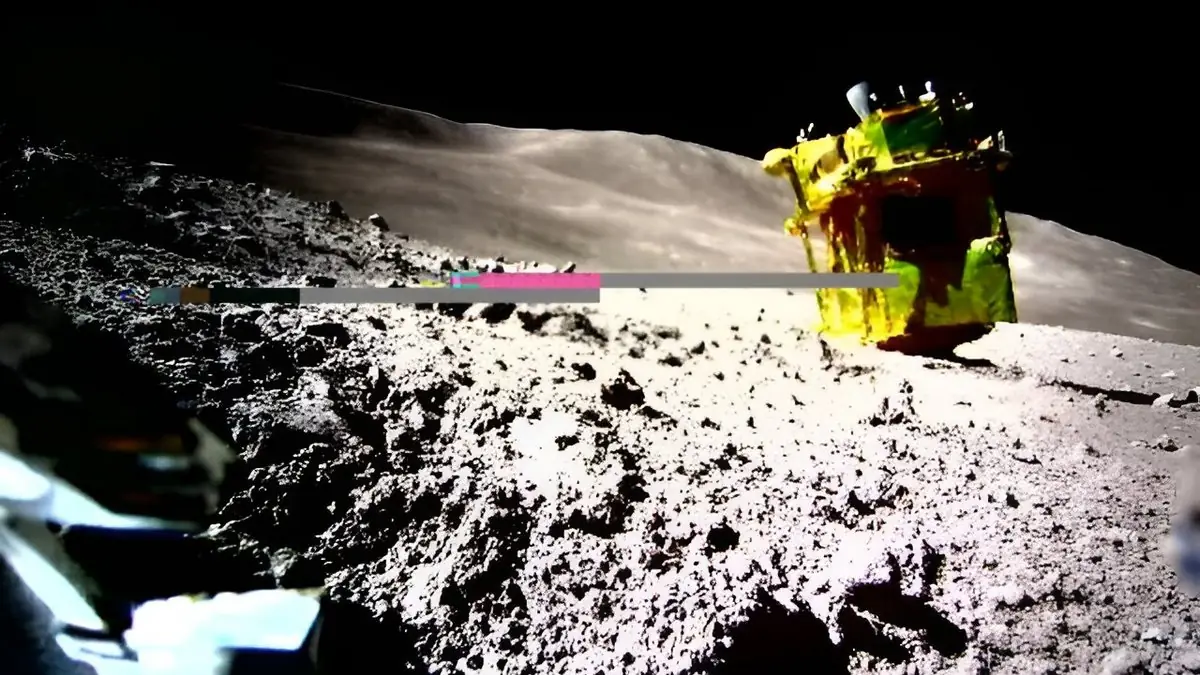LRO (Lunar Reconnaissance Orbiter) NASA twice transmitted a laser pulse to a cookie-sized retroreflector on board the SLIM lander of the Japan Aerospace Exploration Agency (JAXA) on the Moon and received a return signal.
On May 24, 2024, when LRO passed 70 km above SLIM (Smart Lander for Investigating Moon) during two consecutive orbits, it connected with the lander using its laser altimeter, as it had done eight times before. But during these two attempts, the signal bounced back to the LRO detector.
This was a significant achievement for NASA, as the instrument was in a suboptimal position. Retroreflectors are usually mounted on the top of the lander, providing the LRO with a 120-degree angle range for targeting when sending laser pulses to the approximate location of the retroreflector. However, the SLIM lander had settled on the surface with its top side facing sideways, limiting the LRO’s range.
To increase the chances of hitting the target, the LRO team worked with JAXA to determine the exact location and orientation of SLIM. Then, NASA engineers predicted when the LRO’s orbital trajectory would position it at coordinates that offered the best chance of hitting the SLIM retroreflector with laser beams.

“The LRO altimeter wasn’t designed for this type of application, so the chances of accurately pinpointing the tiny retroreflector on the Moon’s surface were already low,” said Xiaoli Sun, who led the team that created the SLIM retroreflector at the Goddard Space Flight Center in Greenbelt, Maryland, as part of a NASA-JAXA partnership. “The fact that the LRO team was able to hit a retroreflector that wasn’t facing the sky but was sideways shows that these small devices are incredibly resilient,” said Sun.
SLIM landed on the Moon’s surface on January 20. The retroreflector, which arrived with the lander, is called the Laser Retroreflector Array and is one of six that NASA has sent to the Moon on private and government landers. It is the second one to return a signal to the LRO altimeter.
The first laser beam was transmitted from LRO to a NASA retroreflector and back on December 12, 2023, when LRO connected with the Vikram lander of the Indian Space Research Organization (ISRO). Since then, LRO has exchanged laser signals with Vikram three more times.

The NASA retroreflector consists of eight quartz corner cube prisms mounted in a dome-shaped aluminum frame, measuring 2 inches wide. Requiring no power or maintenance, these retroreflectors can last for decades on the Moon’s surface, serving as reliable beacons for future missions.
For example, retroreflectors can guide Artemis astronauts to the surface in darkness or mark the locations of spacecraft already on the surface to help astronauts and unmanned spacecraft land nearby.
The LRO laser altimeter, currently the only laser instrument in orbit around the Moon, was designed to map the Moon’s topography in preparation for surface missions, not to point with 1/100-degree accuracy at retroreflectors, which the LRO engineers attempt to do with each ping.
Source: Phys








